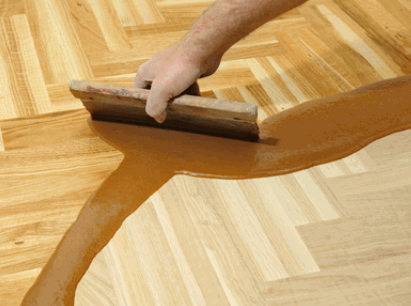Are you considering upgrading your wood flooring with a unique touch?
One option to explore is the application of resin.
In this article, we will delve into the world of resin and wood flooring, exploring whether resin can be applied, the benefits of doing so, the steps involved, safety precautions to take, and alternative options available.
From durability to aesthetic appeal, find out everything you need to know about using resin on wood flooring.
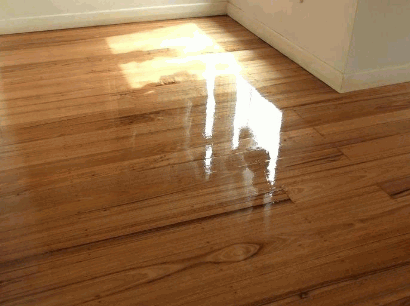
What Is Resin?
Resin is a viscous substance derived from plants or synthetically produced, commonly used as a coating, adhesive, or composite material in various industries.
Resins come in a variety of types, each with its own unique properties and applications. For example, epoxy resin is renowned for its high strength and durability, making it ideal for use in construction, flooring, and even art. On the other hand, polyester resin is often used in manufacturing processes due to its cost-effectiveness and excellent adhesion properties. Polyurethane resin is prized for its flexibility and resistance to abrasion, finding its place in automotive coatings and protective finishes. These diverse resins play a crucial role in enhancing the functionality and aesthetics of countless products across multiple industries.
Discover more: How To Do Epoxy Flooring In Garage
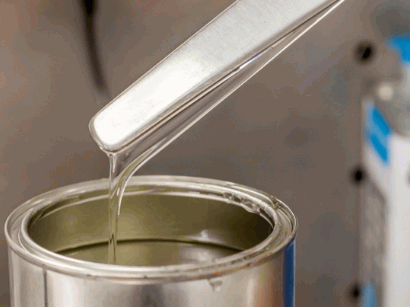
What Is Wood Flooring?
Wood flooring refers to a durable and aesthetically pleasing flooring material made from timber, commonly used in residential and commercial spaces for its natural warmth and beauty.
There are various types of wood flooring, including solid hardwood, engineered wood, and laminate wood.
- Solid hardwood floors are milled from a single piece of wood and are known for their durability and timeless appeal.
- Engineered wood floors consist of a top layer of hardwood bonded to multiple layers of wood or plywood, making them more stable in areas with fluctuations in moisture and temperature.
- Laminate wood flooring, on the other hand, is a cost-effective alternative that mimics the look of hardwood without demanding maintenance.

Can Resin Be Applied On Wood Flooring?
Applying resin on wood flooring is a popular choice for enhancing the durability and aesthetics of wooden surfaces, offering a protective layer against wear, moisture, and other environmental factors.
When epoxy is applied over wood, it forms a strong bond that not only protects the floor but also enhances its overall appearance. The seamless finish provided by epoxy coatings creates a smooth surface that is easy to clean and maintain, making it an ideal choice for high-traffic areas.
Epoxy wood floors are resistant to abrasions, stains, and chemicals, making them long-lasting and cost-effective in the long run. This added durability significantly reduces the need for frequent repairs or replacements, saving both time and money.
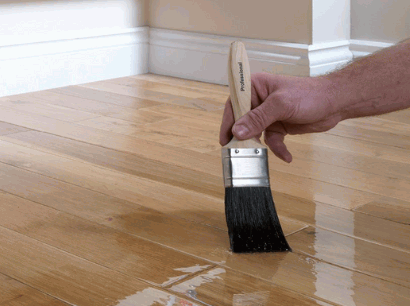
What Types Of Wood Flooring Can Resin be Applied On?
Resin coatings can be applied to various types of wood flooring materials, including hardwood floors, plywood floors, and engineered wood surfaces, to improve their longevity and appearance.
Hardwood floors, known for their durability and classic charm, are a popular choice for epoxy resin coatings. The first step in preparing these floors for resin application involves thorough sanding to create a smooth surface for better adhesion.
Conversely, plywood floors are cost-effective options that can also benefit from epoxy coatings, especially to enhance their strength and resistance to wear and tear.
Engineered wood surfaces, with their layered construction, offer excellent stability and can be further protected by epoxy products to boost their aesthetic appeal and longevity.
What Are The Benefits Of Using Resin On Wood Flooring?
Using resin on wood flooring offers numerous benefits such as enhanced durability, water resistance, and improved aesthetic appeal, making it a practical solution for protecting and beautifying wooden surfaces.
One of the key advantages of applying resin on wood floors is the exceptional moisture protection it provides. The epoxy floors created with epoxy resin form a strong barrier that prevents water damage, ensuring the longevity of the wood. The resin helps in preventing cracks and dents on the wood surface, increasing its overall lifespan. The smooth finish of resin-coated floors makes cleaning hassle-free, saving both time and effort in maintenance tasks. Resin offers a durable, protective, and visually appealing solution for wooden floors.
Durability
The primary benefit of using resin on wood flooring is the significant enhancement in durability, as the epoxy coating forms a tough protective layer that can withstand heavy foot traffic and daily wear and tear.
Due to its impressive strength and impact resistance, epoxy coatings are commonly used to protect wood floors from scratches, stains, and moisture damage. For instance, when utilizing epoxy filler before applying the final epoxy paint layer, the wood becomes highly resistant to chemical spills and rough handling, ensuring a longer lifespan and reduced maintenance requirements.
Water Resistance
Resin coatings create a waterproof barrier on wood flooring, preventing moisture penetration and reducing the risk of water damage, warping, or mold growth, ensuring the longevity and structural integrity of the wooden surfaces.
Epoxy provides a durable shield against various liquids, such as spills from drinks or leaks from appliances, offering peace of mind against accidental messes and potential water-related issues. Its resistance to moisture makes cleaning a breeze – simply wipe away any spills without fear of seepage into the wood, maintaining a pristine look with minimal effort. This protective layer not only guards against humidity and water exposure but also adds a glossy finish, enhancing the aesthetic appeal of the floor while serving a practical purpose.
Aesthetic Appeal
Using resin coatings on wood flooring enhances the aesthetic appeal of the surfaces by providing a glossy finish, deepening the wood grain, and offering customization options with various colors and textures, elevating the overall look of the interior spaces.
Epoxy coatings on wood floors create a durable and long-lasting surface that is resistant to scratches, stains, and moisture, making it ideal for high-traffic areas such as kitchens, living rooms, and commercial spaces.
The application of epoxy also helps in sealing the wood, preventing it from warping or cracking over time, thus increasing its longevity. The seamless nature of epoxy coatings gives a modern and sleek appearance to the floors, enhancing the visual appeal and adding a touch of sophistication to any room.
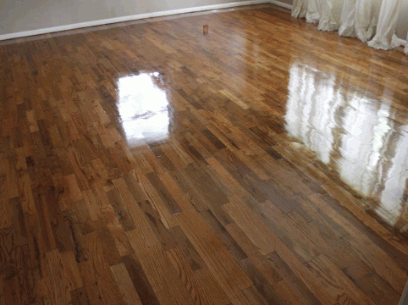
What Are The Steps To Apply Resin On Wood Flooring?
The process of applying resin on wood flooring involves several key steps, including surface preparation, resin mixing, and application, followed by curing and finishing to achieve a durable and visually appealing epoxy coating.
Before starting the application process, it is crucial to ensure that the temperature of the workspace is suitable for resin application. Ideally, the room temperature should fall within the recommended range specified by the resin manufacturer, as extremes can affect the curing process. Any cracks or gaps in the wood floor should be properly sealed and leveled to prevent resin leakage and ensure a smooth finish.
Preparation Of The Wood Flooring
Before applying resin, it is crucial to prepare the wood flooring by cleaning the surface, repairing any cracks or damages, ensuring proper moisture levels, and achieving a smooth, level base for the epoxy coating to adhere effectively.
Start by thoroughly cleaning the wood flooring by removing any dirt, dust, or debris using a vacuum or a mop. Next, inspect the floor for cracks or imperfections that need to be filled and repaired using suitable wood fillers. Surface cleanliness plays a vital role in ensuring proper adhesion of the resin, so make sure the floor is free of any contaminants.
Check the moisture levels of the wood to prevent any potential issues after applying the resin. Use a moisture meter to determine if the wood is within the acceptable range for resin application. It is essential to address any excessive moisture problems before proceeding with the coating.
Furthermore, leveling the floor is crucial to create a smooth surface for the resin. Use a leveling compound to fill any uneven areas and ensure that the floor is flat and even. Proper preparation will not only improve the aesthetic appeal of the finished flooring but also enhance the durability and longevity of the resin coating.
Mixing And Applying The Resin
The next step involves accurately mixing the epoxy resin components, following the manufacturer’s instructions, and applying the resin evenly onto the prepared wood flooring surface using a roller or brush, ensuring complete coverage and a smooth finish.
It is crucial to pay close attention to the correct ratios of resin mixture to catalyst, as this directly impacts the durability and effectiveness of the coating. Proper measuring tools and a meticulous approach are essential to achieving the desired results.
Experimenting with different application techniques, such as cross-rolling or feathering, can help in ensuring an even and professional-looking finish.
The curing time of the resin is equally important in allowing the coating to set properly. Allowing sufficient drying time as per the manufacturer’s recommendations is vital to prevent any imperfections and ensure a durable, long-lasting finish.
Once the resin has fully cured, the wood floor will be transformed with a glossy, protective coating that enhances its natural beauty and durability.
Curing And Finishing
Once the resin is applied, it needs sufficient curing time to harden and bond with the wood flooring, creating a durable and resilient surface. After curing, the final finishing touches can be added to achieve the desired look and protection.
The curing process is crucial as it ensures that the epoxy floors properly adhere to the wood surface. During this time, it is essential to maintain optimal conditions such as proper temperature and humidity levels to allow for complete curing. Adequate curing time prevents premature wear and helps in maximizing the longevity of the finish.
Following the curing stage, post-application care is essential to preserve the beauty and integrity of the wood floors. Regular cleaning and maintenance routines should be established to protect the epoxy finish from damage and maintain its luster over time.
Surface treatments like sealers or topcoats can be applied after curing to enhance the appearance and provide additional protection against scratches and stains. These final touches not only elevate the aesthetic appeal of the wood floors but also offer added durability for long-term use.
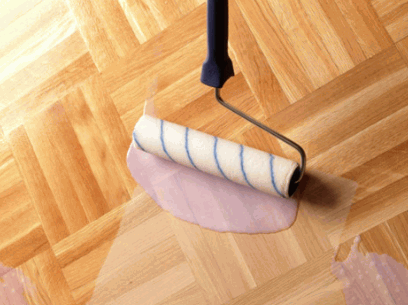
What Are The Safety Precautions When Working With Resin?
When working with resin, it is essential to follow safety precautions to protect against potential health hazards, such as ensuring proper ventilation, wearing protective gear, and implementing appropriate measures for material disposal to minimize environmental impact.
One crucial aspect to consider is the importance of ventilation systems when working with resin. Ventilation helps to limit exposure to harmful fumes and vapors that can arise during the curing process. Along with ventilation, donning the appropriate protective clothing is essential to safeguard oneself from skin irritation and other potential risks associated with direct contact with resin.
Managing hazardous waste generated from the resin work is vital to prevent pollution and ensure a safe working environment. This involves using designated containers for waste disposal and following proper guidelines for handling and disposal to protect both surfaces and the surrounding environment.
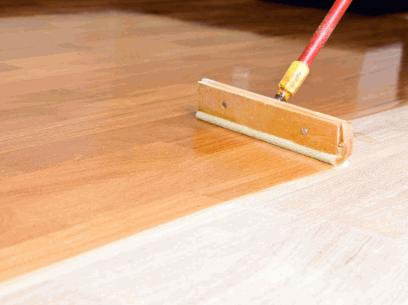
Proper Ventilation
Adequate ventilation is crucial when working with resin to ensure the dispersion of fumes and airborne particles, reducing the risk of inhalation and potential respiratory issues, making it essential for a safe working environment.
When considering resin applications, having proper ventilation not only safeguards your health but also plays a vital role in the quality of your final product. By using ventilation equipment such as fume extractors, air purifiers, and exhaust fans, you can effectively control the concentration of fumes in your workspace. This ensures that the fumes are not only removed from the immediate vicinity but also prevents them from lingering and causing harm.
Protective Gear
Wearing appropriate protective gear, such as gloves, goggles, and masks, is necessary when working with resin to prevent skin contact, eye irritation, or inhalation of harmful vapors, ensuring personal safety and minimizing health risks.
A well-ventilated area or a respirator may be crucial depending on the type of resin used. Cleaning the work area and tools regularly is also essential to avoid accidental exposure to resin. It’s recommended to have a dedicated space for resin work, away from food preparation areas. When epoxy floors are involved, taking extra precautions like wearing shoe covers and using protective barriers becomes vital to prevent accidental spills or contact.
Proper Disposal Of Materials
Proper disposal of resin materials is essential to prevent environmental contamination, requiring adherence to local regulations for hazardous waste disposal, recycling options, and safe practices to minimize the ecological impact of resin residues.
Regarding responsible disposal of resin waste, recycling plays a crucial role in reducing the environmental impact. Recycling facilities can process resin waste into new products, reducing the need for raw materials and minimizing waste sent to landfills. Segregating resin waste based on the type and ensuring it is free from contaminants like cracks or epoxy over wood is essential for recycling efficiency.
Along with recycling, following waste management guidelines is vital. Properly sealing resin waste in leak-proof containers, labeling them correctly, and storing them in designated areas can prevent spills and leaks that could harm the environment.
Considering the environmental impact, individuals and businesses must choose responsible disposal methods for resin waste, taking into account factors such as the material’s potential environmental hazards and long-term effects on ecosystems.
What Are The Alternatives To Using Resin On Wood Flooring?
Apart from resin coatings, there are alternative finishes available for wood flooring, including varnish, polyurethane, and wax, each offering different properties and aesthetic effects for enhancing and protecting wooden surfaces.
These options provide benefits that cater to specific needs and preferences when it comes to wood floor finishes. Varnish is known for its durability and ability to enhance the natural beauty of wood, making it suitable for high-traffic areas. Polyurethane, on the other hand, offers excellent protection against scratches and moisture, making it ideal for areas prone to wear and tear.
Wax, a traditional choice, imparts a warm, natural finish to wood floors, creating a timeless look. Understanding the application methods for each finish is crucial to achieving the desired outcome and lasting protection for your wooden surfaces.
Varnish
Varnish is a popular alternative to resin for wood flooring, offering a transparent or tinted finish that enhances the natural beauty of the wood while providing moderate protection against scratches, moisture, and UV damage.
Unlike epoxy coatings, varnish is easier to apply for DIY projects due to its self-leveling properties. It can be brushed or sprayed onto the wood surface, allowing for a smooth and even coverage. Varnish is known for its durability, with many products offering high resistance to wear and tear, making it a suitable option for high-traffic areas.
Cleaning varnished floors is relatively straightforward, requiring regular sweeping and occasional damp mopping with a mild wood floor cleaner. Maintaining varnish involves periodic reapplication to touch up any areas that may have worn down over time, ensuring the continued protection and aesthetic appeal of the wood flooring.
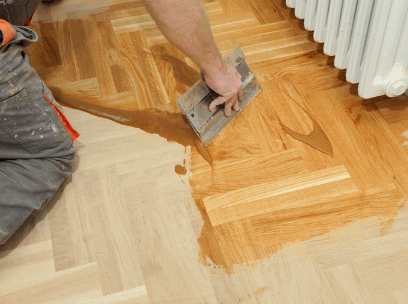
Polyurethane
Polyurethane coatings are another popular choice for wood flooring, known for their excellent durability, water resistance, and ease of application, offering a tough protective layer that enhances the longevity and appearance of wooden surfaces.
Compared to epoxy resin, polyurethane coatings provide a more flexible finish, making them ideal for areas prone to movement and temperature changes. This flexibility helps prevent cracking and chipping, ensuring a longer-lasting protective layer for the wood. Maintenance is simpler with polyurethane, as it requires only regular cleaning and occasional recoating, saving both time and effort for homeowners. Furthermore, polyurethane coatings come in a variety of finishes, from satin to high gloss, allowing for customization to suit different aesthetic preferences.
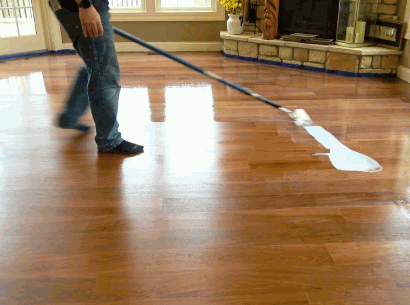
Wax
Wax finishes provide a natural and traditional option for wood flooring, offering a soft sheen and smooth touch while enhancing the wood’s natural color and grain, though requiring more frequent maintenance and reapplication compared to resin coatings.
One of the unique properties of wax finishes is their ability to penetrate the wood surface, nourishing and protecting it from within. This results in a warm and organic aesthetic that is difficult to achieve with synthetic coatings like epoxy paint. Although application methods vary, wax is typically spread thinly and evenly, requiring multiple coats for optimal results. To maintain the luster of a wax finish, regular cleaning with a mild detergent and reapplication every few months is essential. Surface scratches and wear can easily be addressed by simply adding a fresh layer of wax, making it a simple yet effective way to keep your wood floors looking their best.
